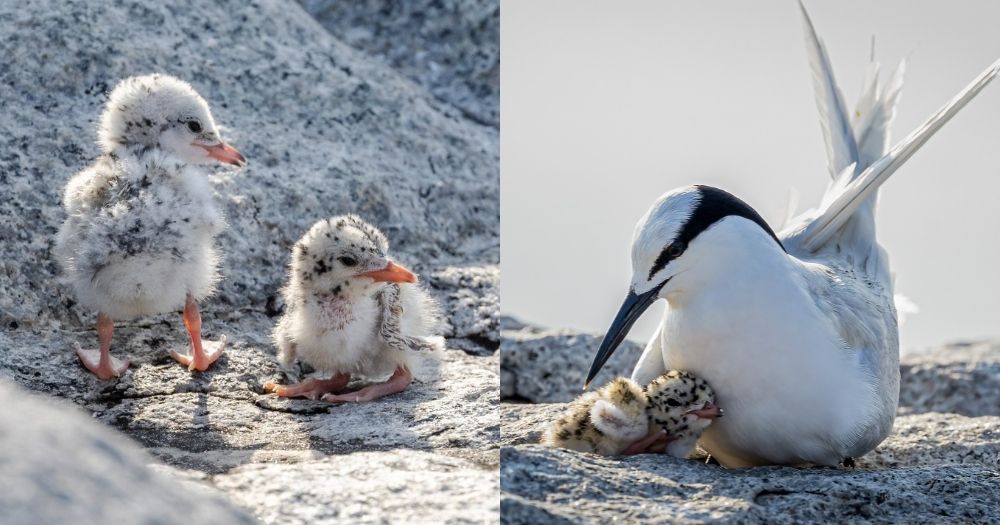Follow us on Telegram for the latest updates: https://t.me/mothershipsg
A colony of Black-naped terns have been busy caring for their newly-hatched chicks on an isolated offshore rock in Singapore.
Lucky for us, a group of photographers have managed to capture these lesser-known birds in their most adorable state.
Adorable tern chicks
About a week old, the plumage of the new chicks is very much alike the granite rocks they hatched on.
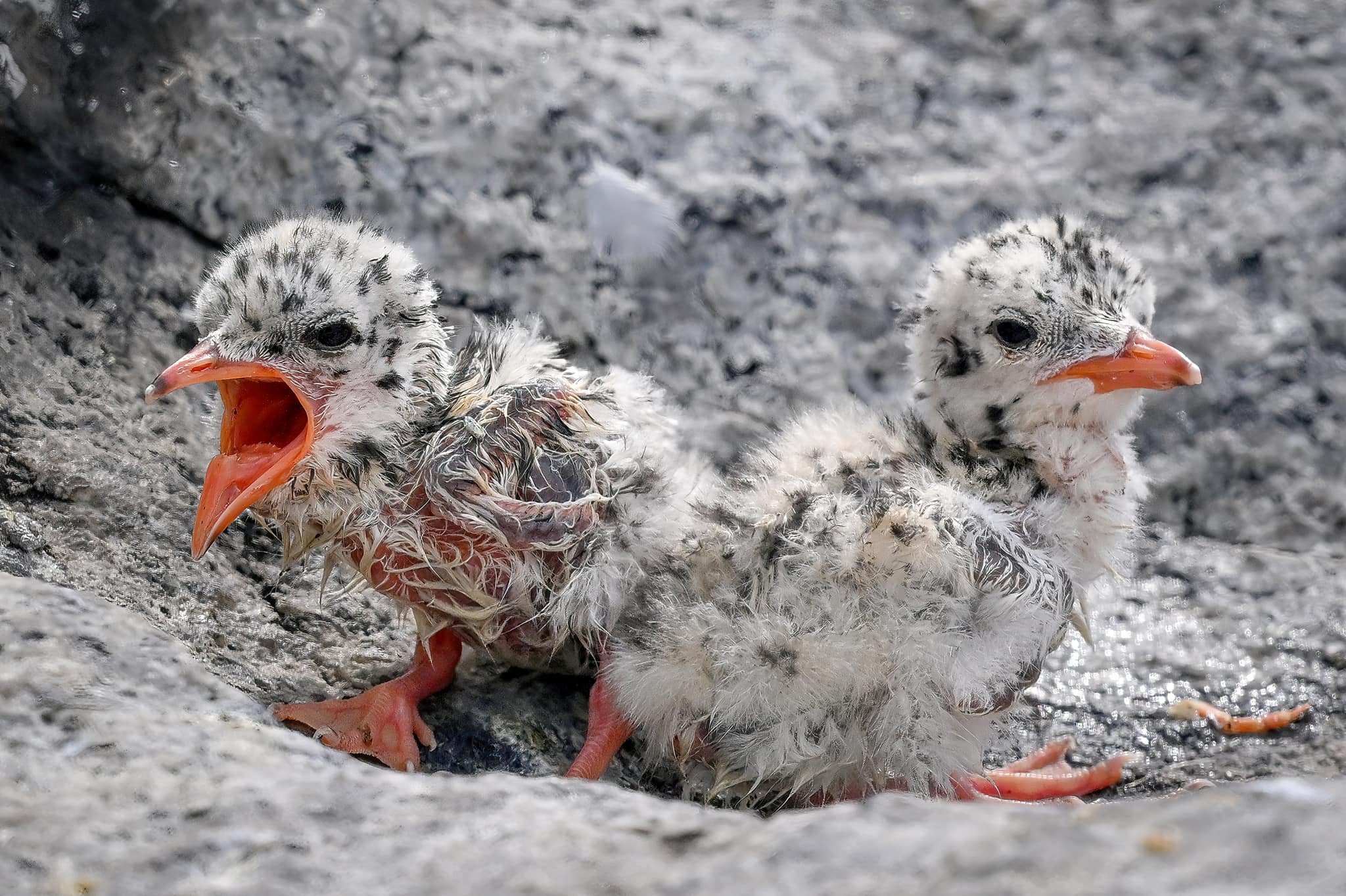 Image courtesy of Andrew JK Tan/FB.
Image courtesy of Andrew JK Tan/FB.
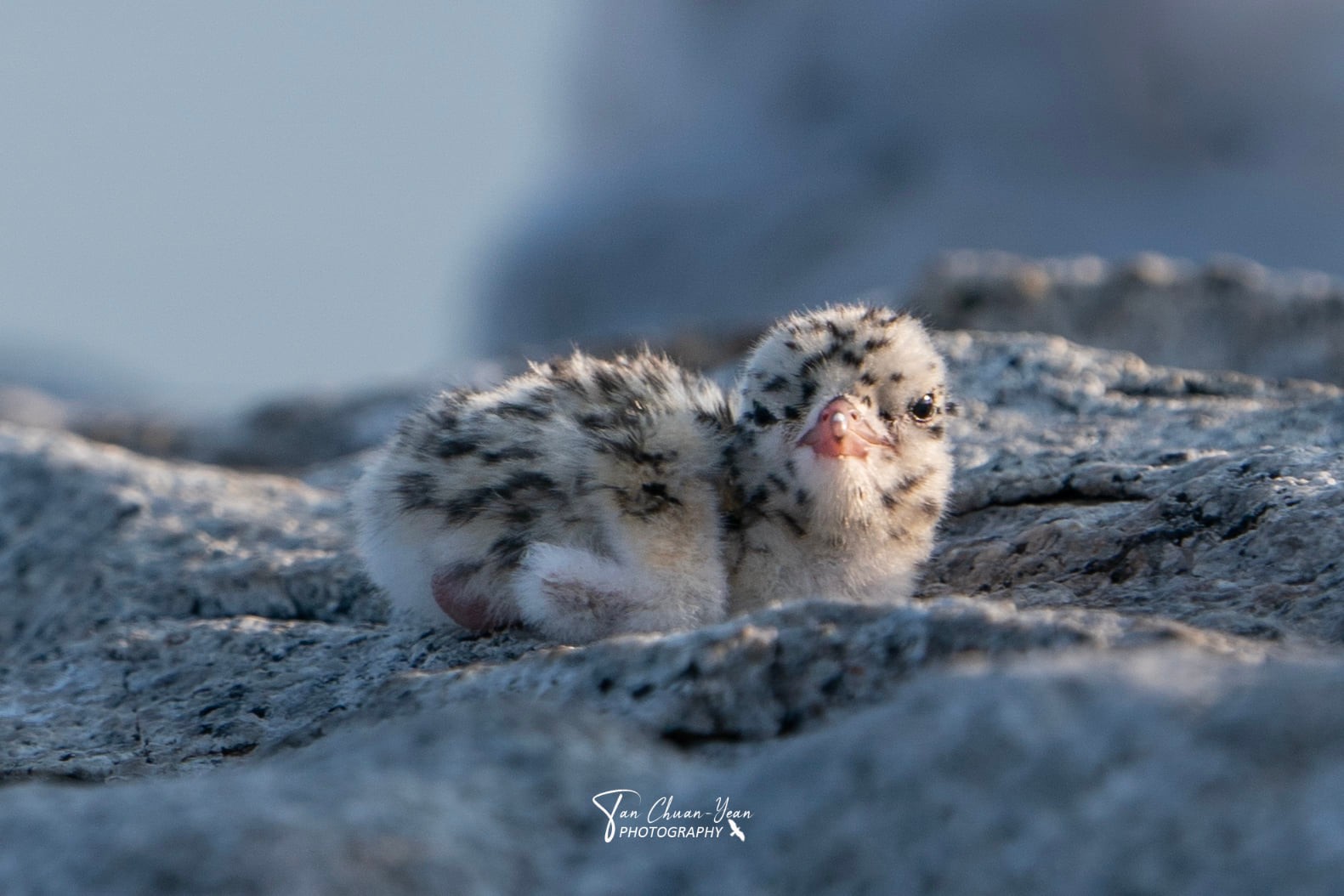 Image courtesy of Tan Chuan-Yean/FB.
Image courtesy of Tan Chuan-Yean/FB.
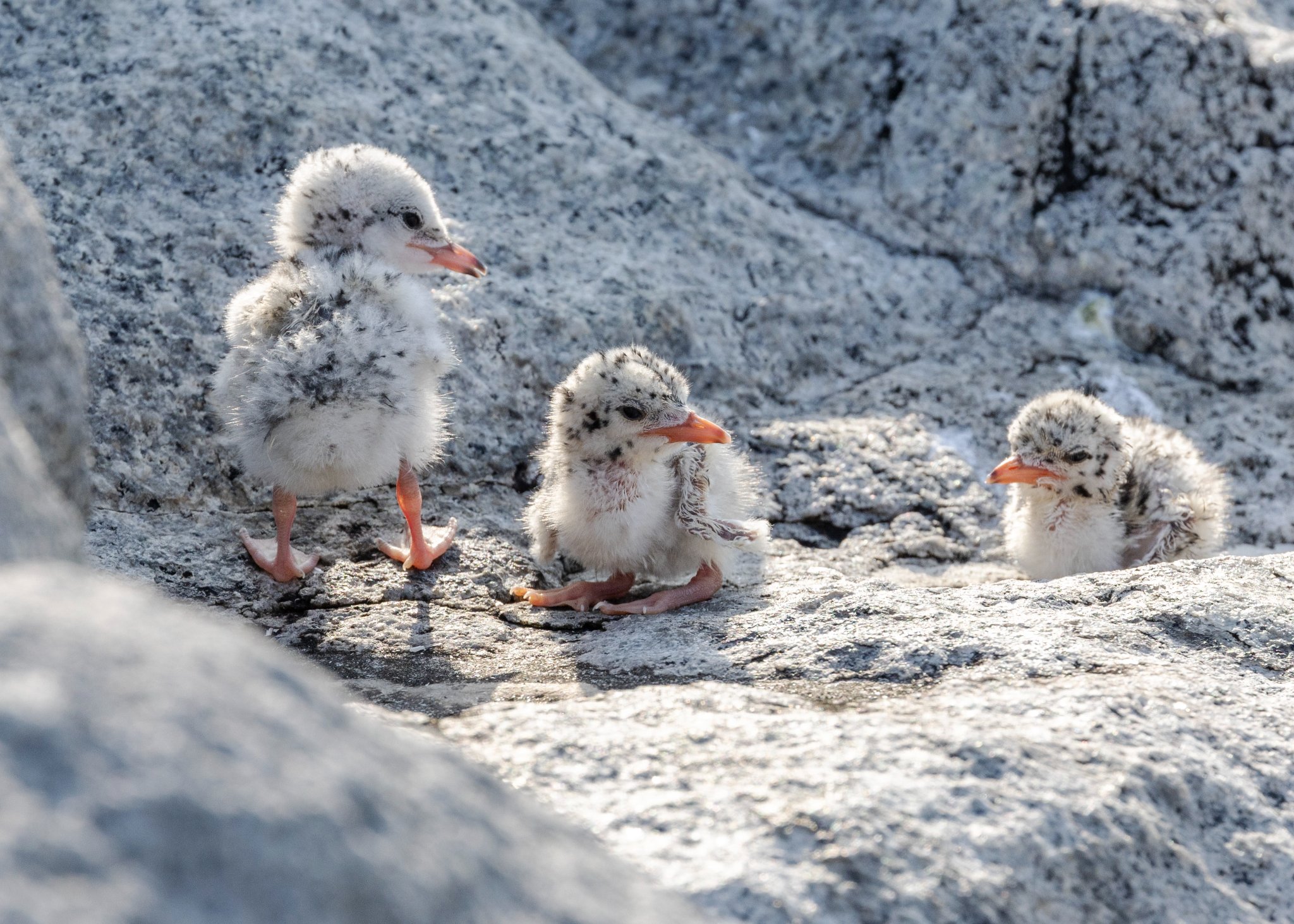 Image courtesy of Judy Wong/FB.
Image courtesy of Judy Wong/FB.
Surrounded by water, they are reliant on their parents to care for them.
Photographer Derek Yeo captured the heartwarming moment of one parent feeding its baby an anchovy.
One tern chick steps forward with its beak wide open to reach for the meal, but it loses its balance on the uneven rocks.
It took an adorable tumble while holding onto its meal.
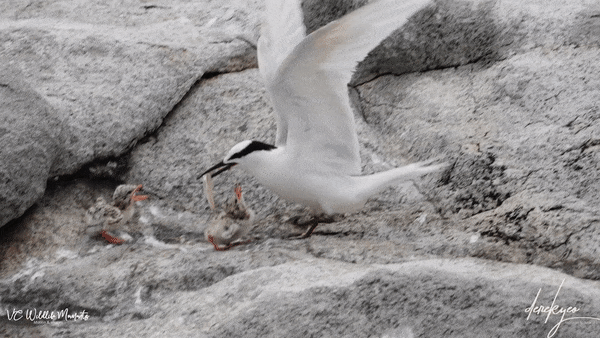 Video courtesy of Derek Yeo/FB.
Video courtesy of Derek Yeo/FB.
The chick gets back on its feet and impressively swallows the fish whole.
Watch the full video here:
Yeo told Mothership there were still a handful of eggs that had not hatched yet, though it was hard to tell as some may have been hidden from sight.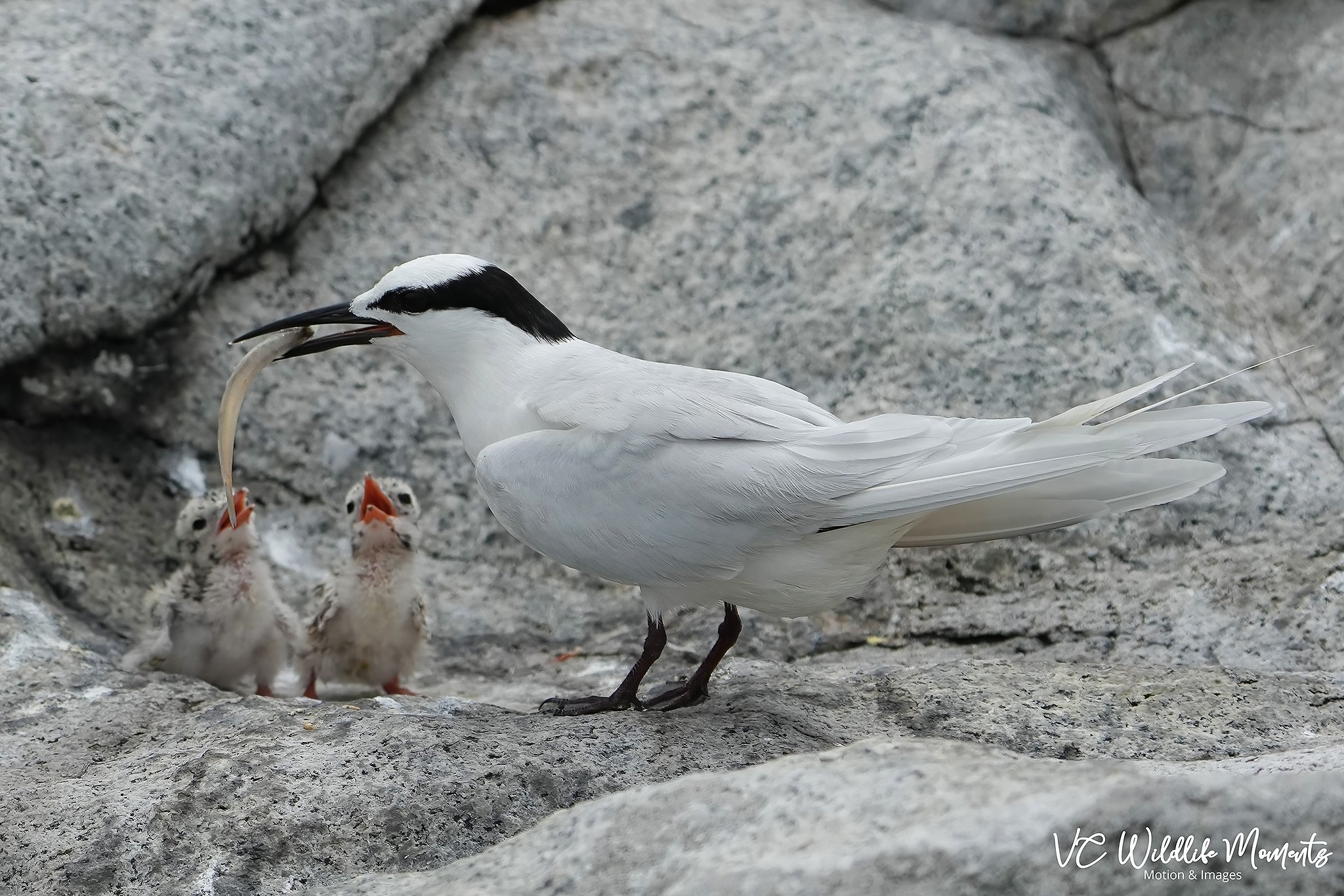 Image courtesy of Derek Yeo/FB.
Image courtesy of Derek Yeo/FB.
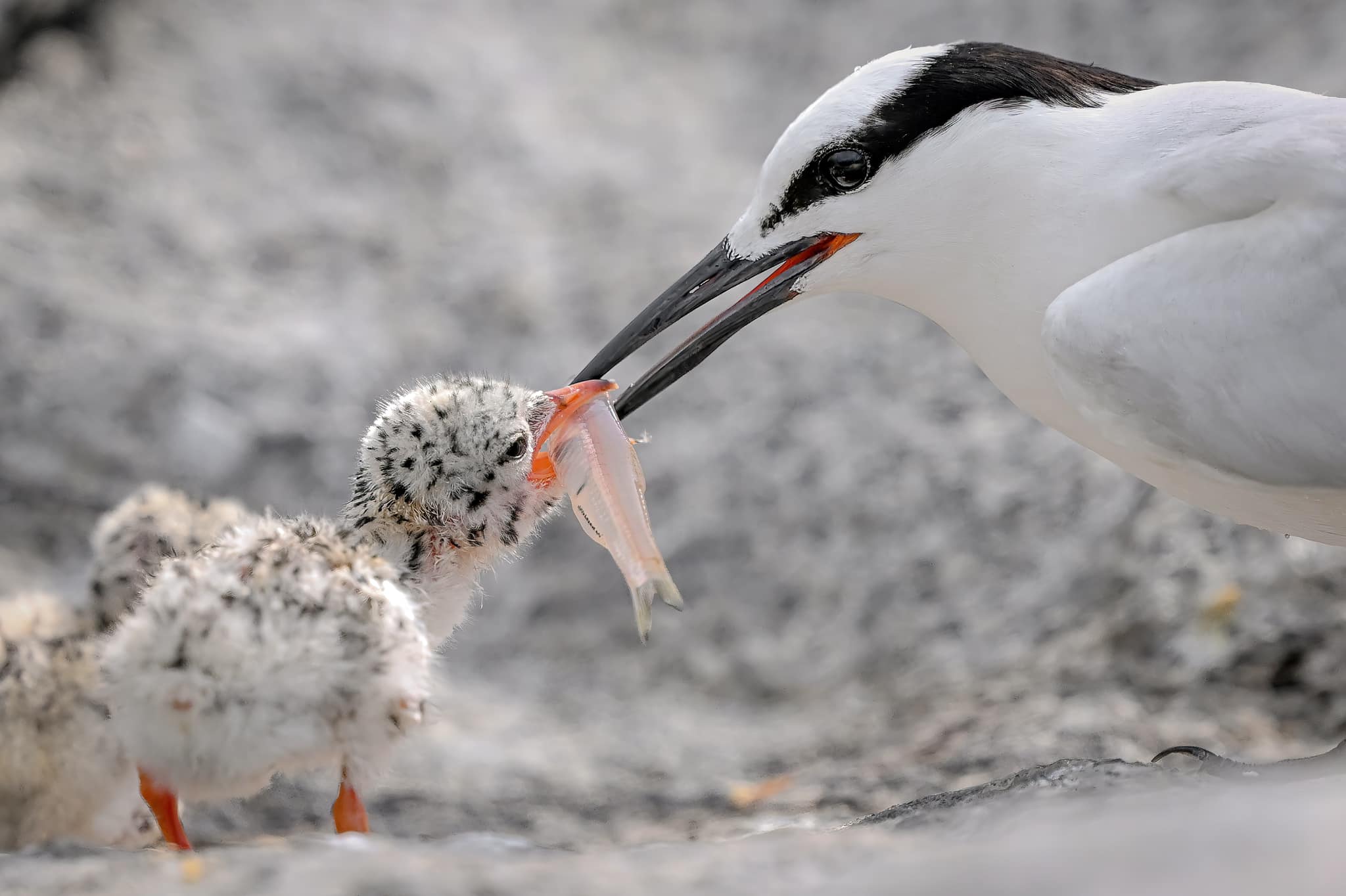 Image courtesy of Andrew JK Tan/FB.
Image courtesy of Andrew JK Tan/FB.
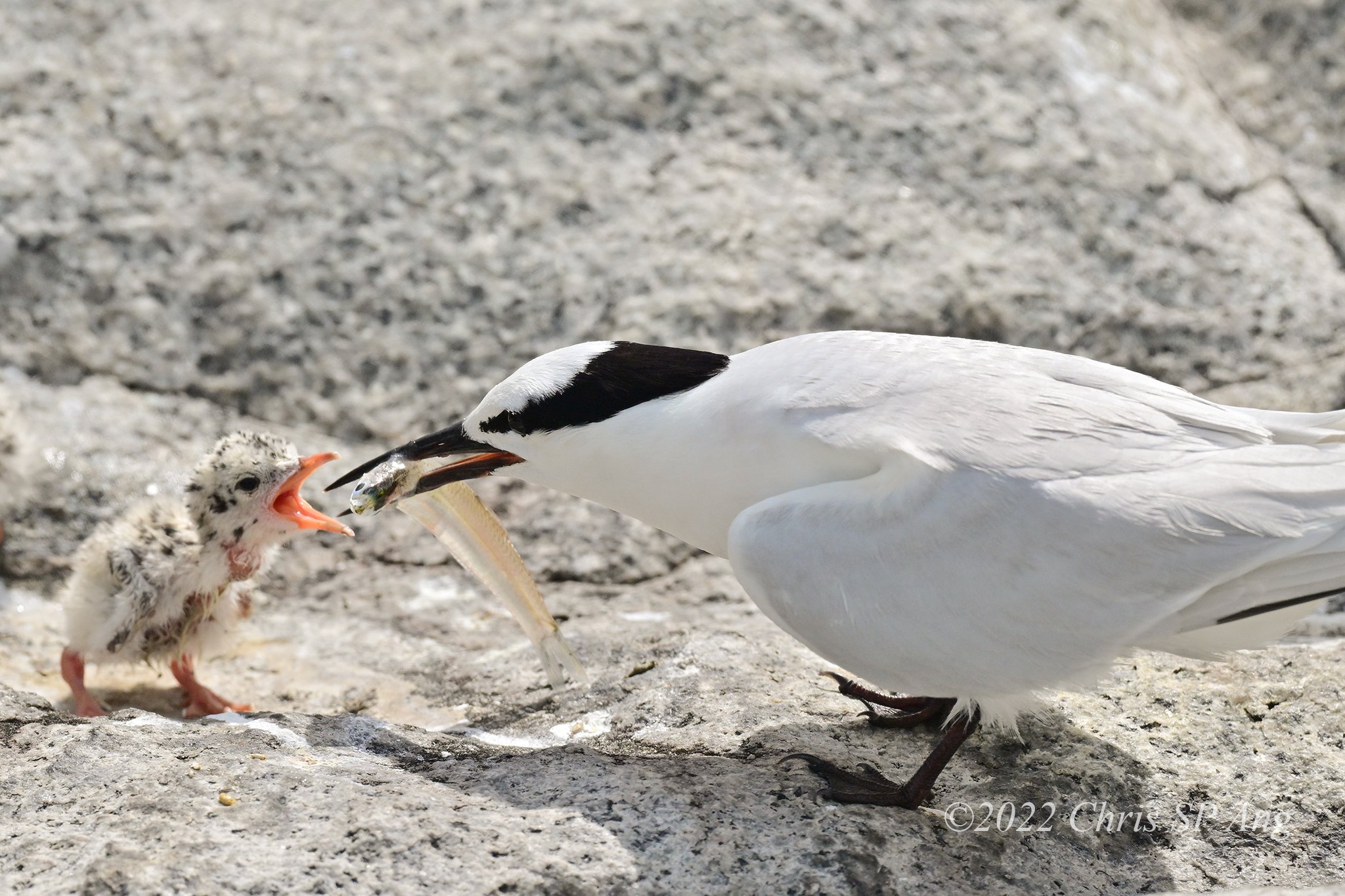 Image courtesy of Chris Ang Photography/FB.
Image courtesy of Chris Ang Photography/FB.
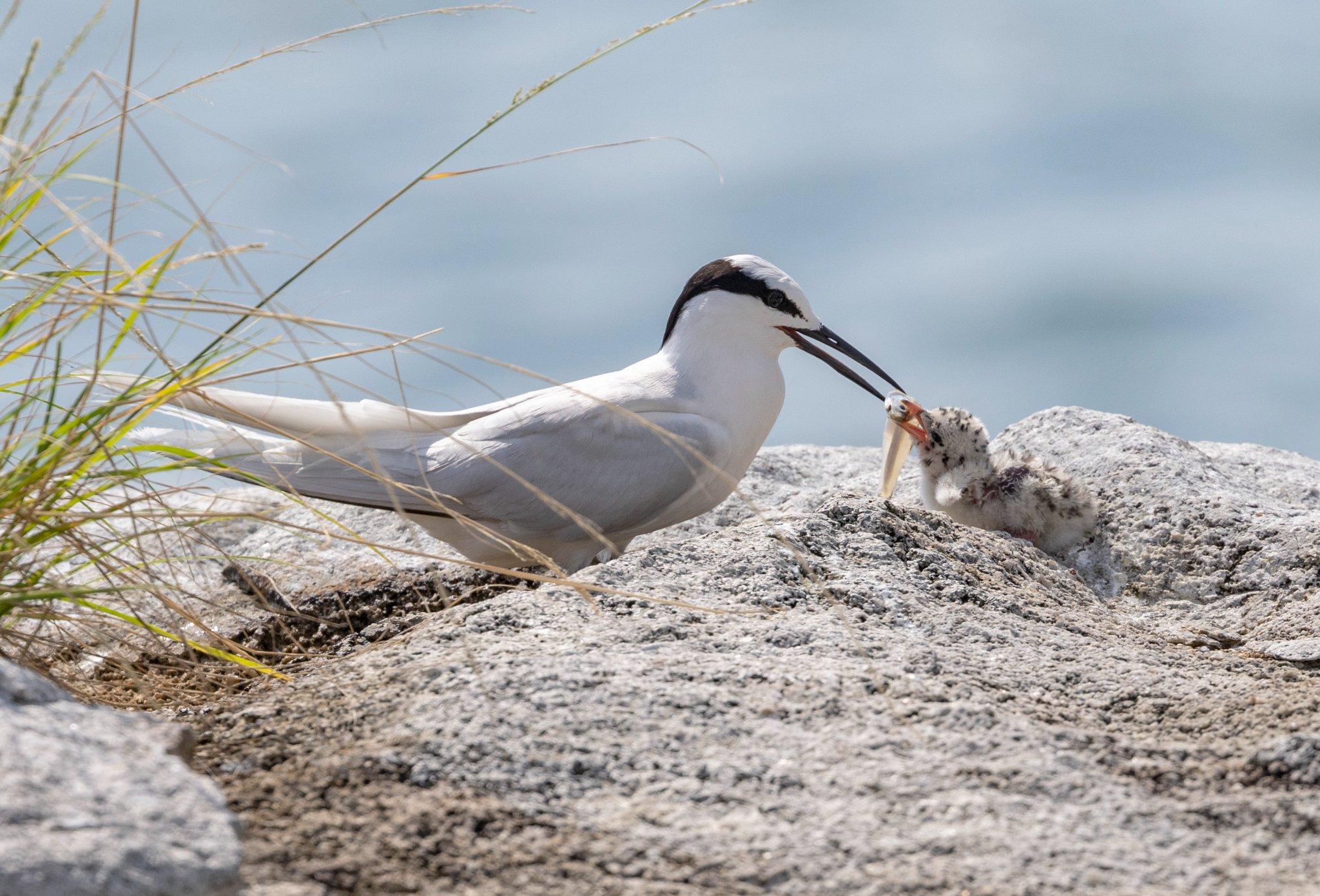 Image courtesy of Judy Wong/FB.
Image courtesy of Judy Wong/FB.
Photographer Tan Chuan-Yean captured a scene of an adult tern picking on a chick and scooping it up with its beak.
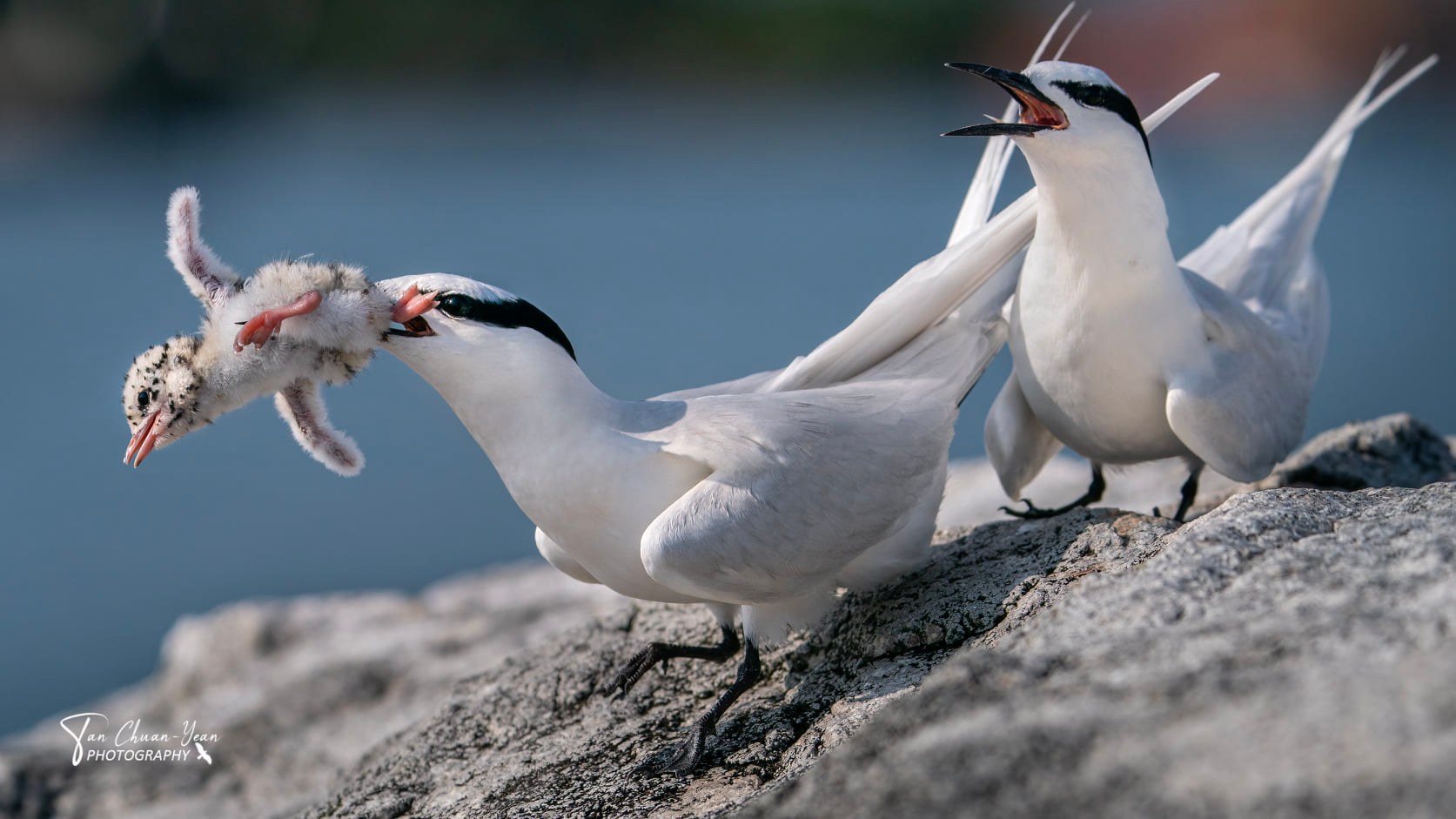 Image courtesy of Tan Chuan-Yean/FB.
Image courtesy of Tan Chuan-Yean/FB.
Not to worry, as Tan said that the chick was not harmed.
About Black-naped terns
In Singapore, Black-naped terns are considered uncommon residents, according to the Singapore Birds Project.
They live in open seas and sea-coasts, and are usually found only in eastern half of the Johor Straits and the waters off Pulau Ubin and Pulau Tekong.
They lay their eggs directly on either rocky surfaces on cliffs or the ground, with a slight depression, above tide level without any nesting material, according to Singapore Infopedia.
The Black-naped terns feed on small fish of about four to eight centimetres long.
Their breeding season begin in May and end in August.
By September, they move offshore to spend their time in the South China Sea, wrote the Bird Ecology Study Group.
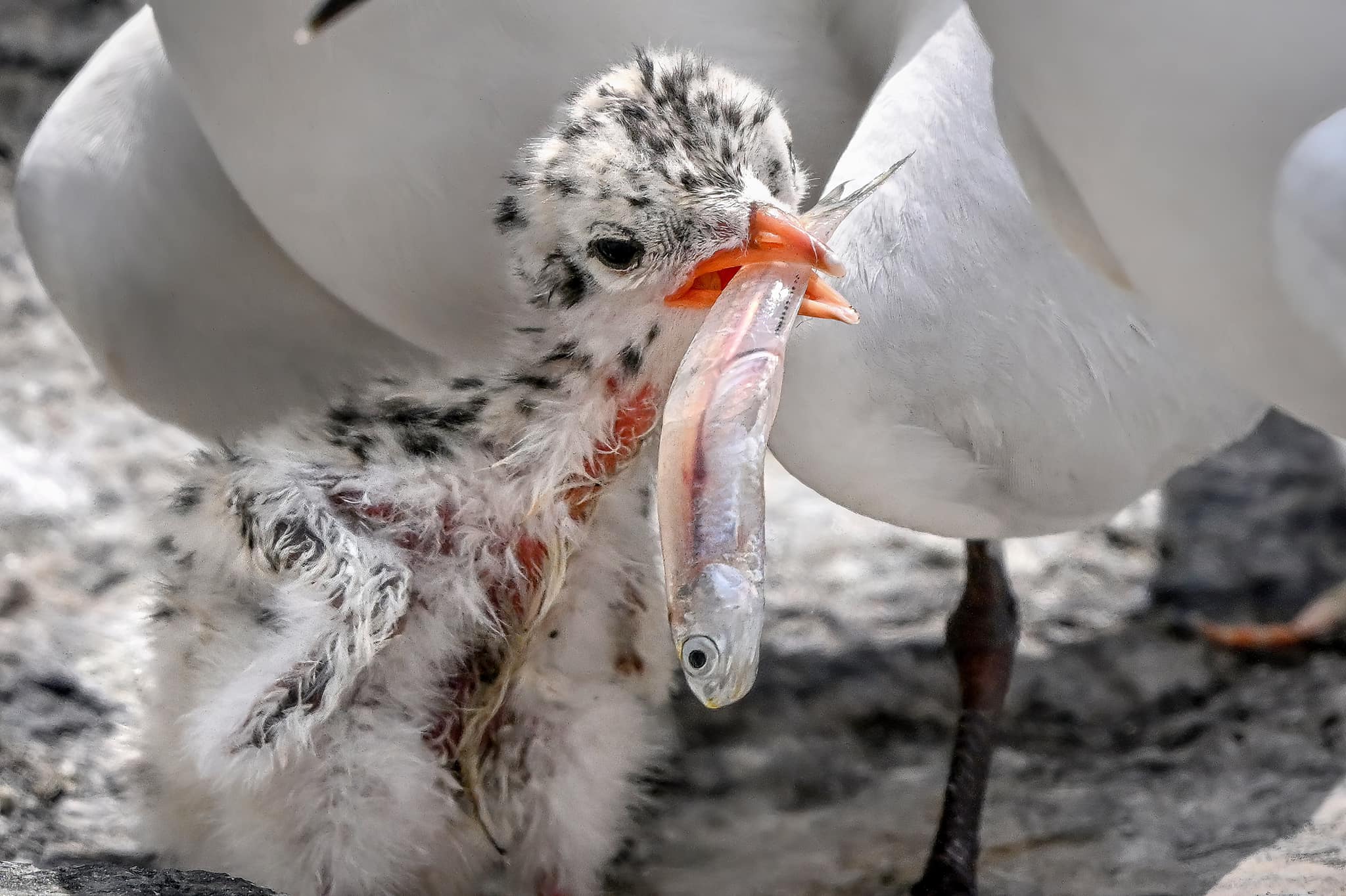 Image courtesy of Andrew JK Tan/FB.
Image courtesy of Andrew JK Tan/FB.
The Black-naped tern was also featured on the Singapore S$1 note issued between 1976 and 1987.
It is also the favourite bird of renowned photographer Loke Wan Tho who is also the founder of Cathay Organisation.
 Image via leftovercurrency.
Image via leftovercurrency.
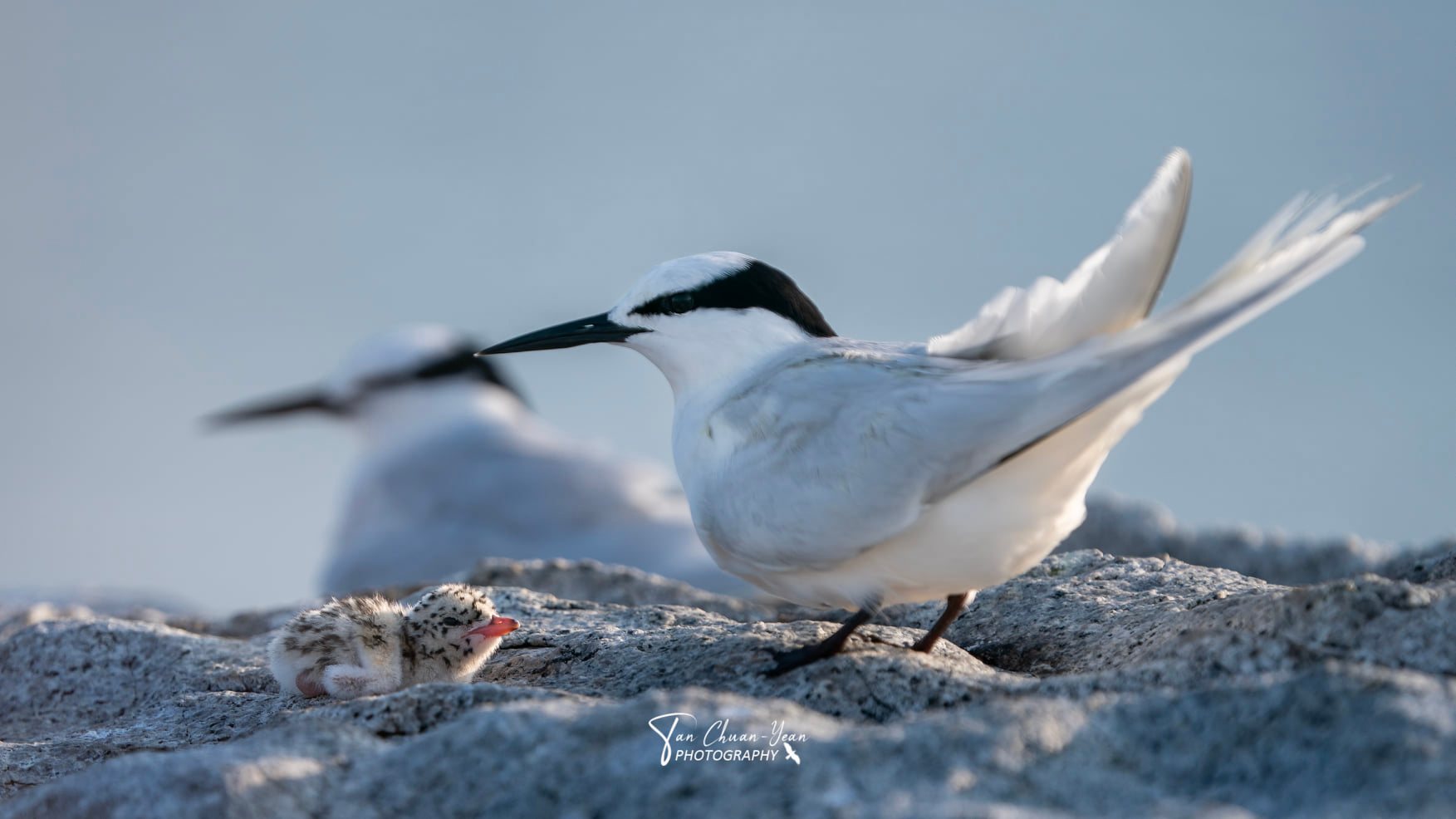 Image courtesy of Tan Chuan-Yean/FB.
Image courtesy of Tan Chuan-Yean/FB.
Courtship for these terns involves flight displays and courtship feeding, which make for striking photos of these birds mid-air.
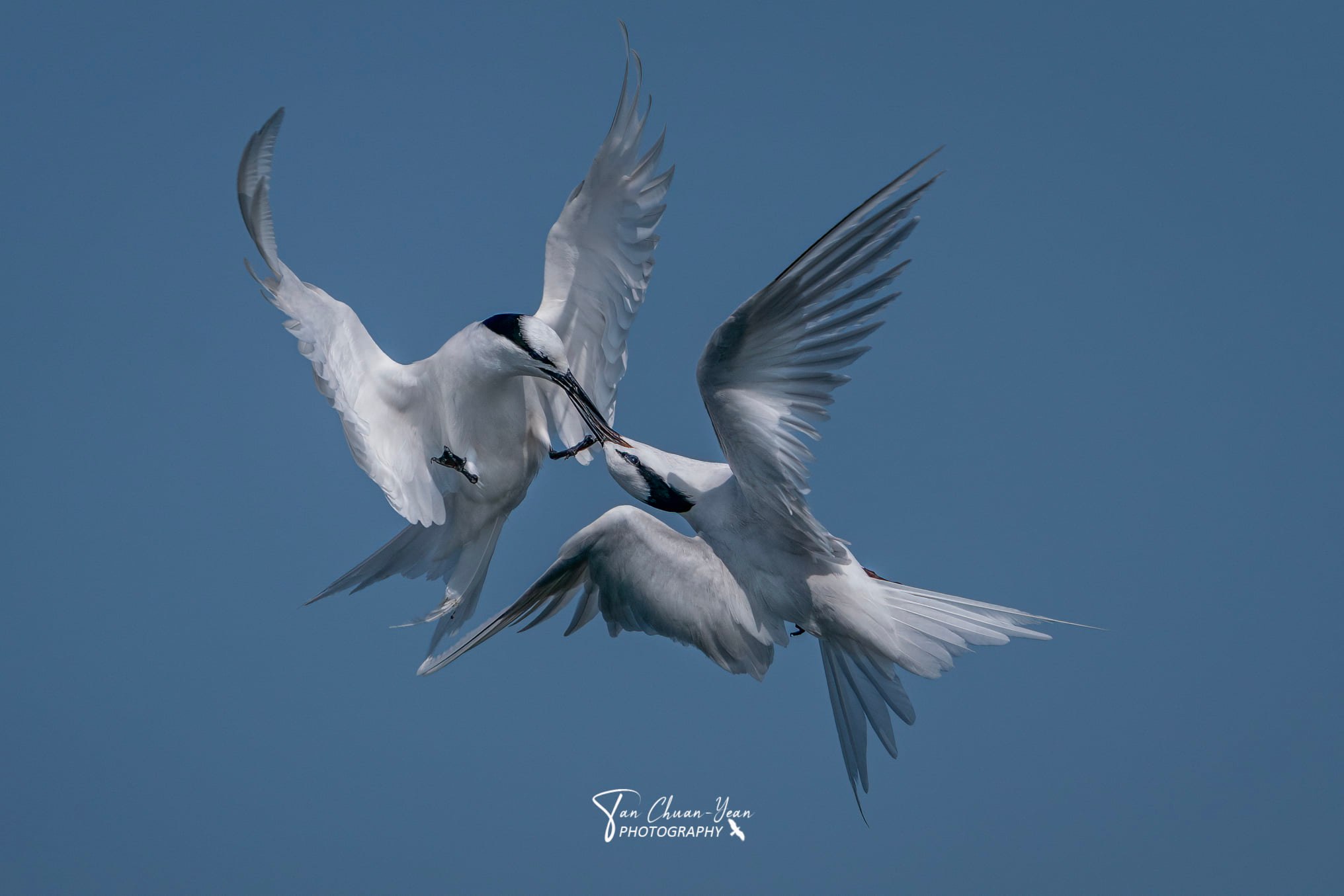 Image courtesy of Tan Chuan-Yean/FB.
Image courtesy of Tan Chuan-Yean/FB.
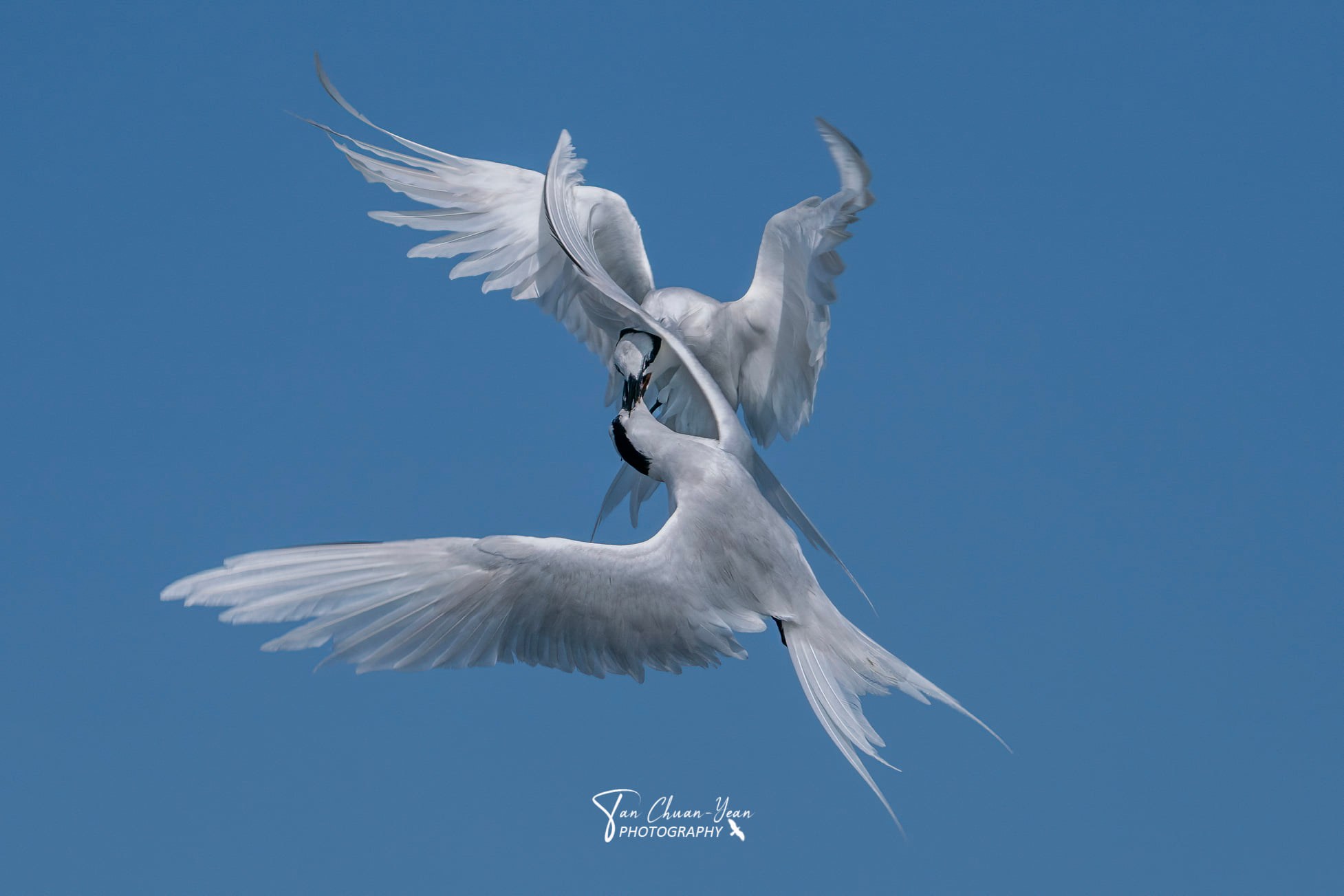 Image courtesy of Tan Chuan-Yean/FB.
Image courtesy of Tan Chuan-Yean/FB.
Endangered in Singapore
The Black-naped tern was nationally classified as endangered in 2008, according to the Singapore Red Data Book.
According to the National Parks Board (NParks), Black-naped terns are the only regularly colonial nesting seabirds in Singapore.
It is estimated that the colony consists of 25 to 100 birds.
There is only one known Black-naped tern breeding site locally, which is not protected from human disturbance despite recommendations made to restrict access to this site to deter disturbances by errant fishermen, photographers and picnickers.
The site is the "only known continuous nesting site for this species in Singapore", veteran naturalist Subaraj Rajathurai wrote about the terns in 2002.
Black-naped terns have been nesting in this site continually for more than half a century.
"There have been a few nesting records from a few rocks around Tekong and Ubin but these are merely temporary and often disturbed locations," he stated.
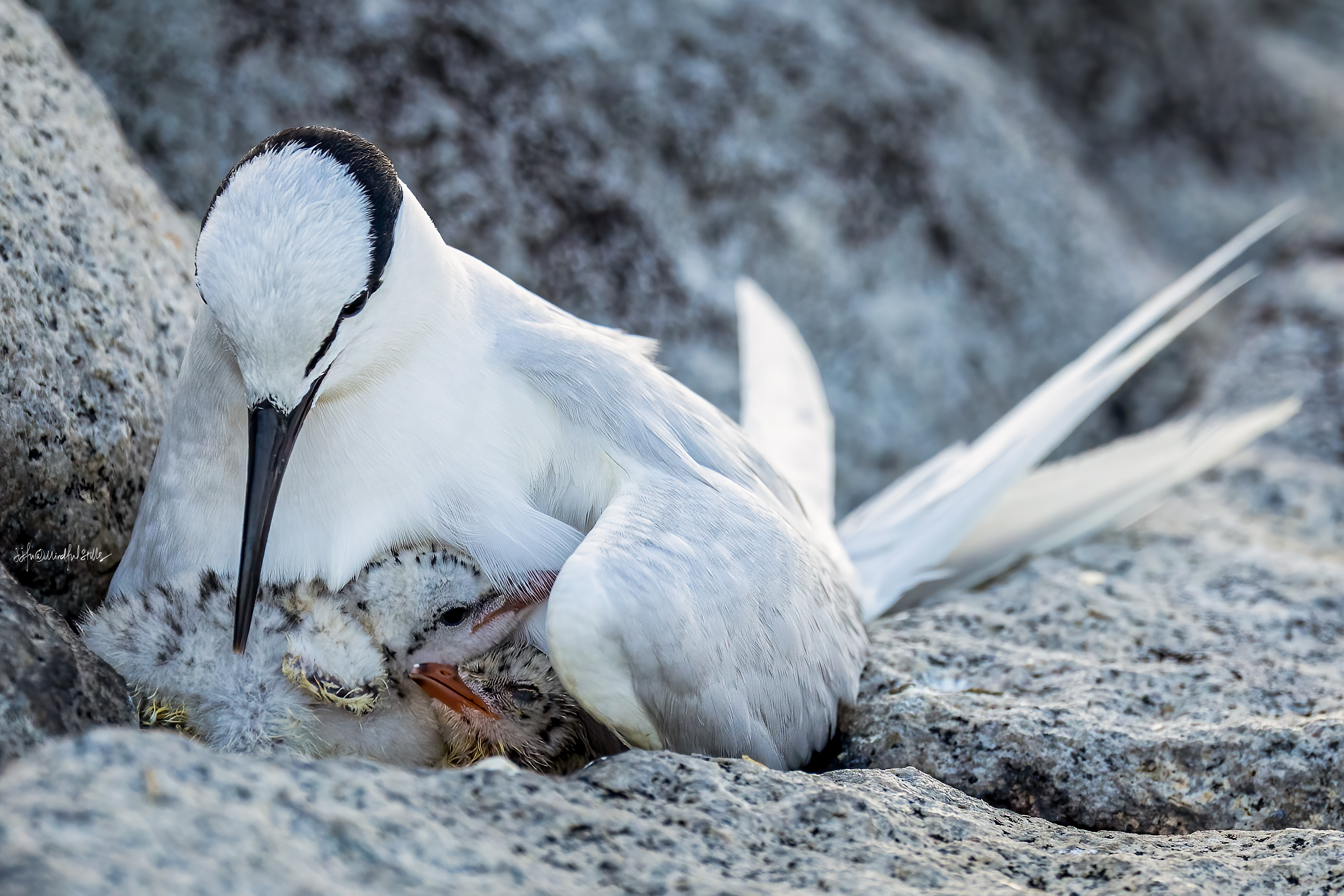 Image by JJ Fu/FB.
Image by JJ Fu/FB.
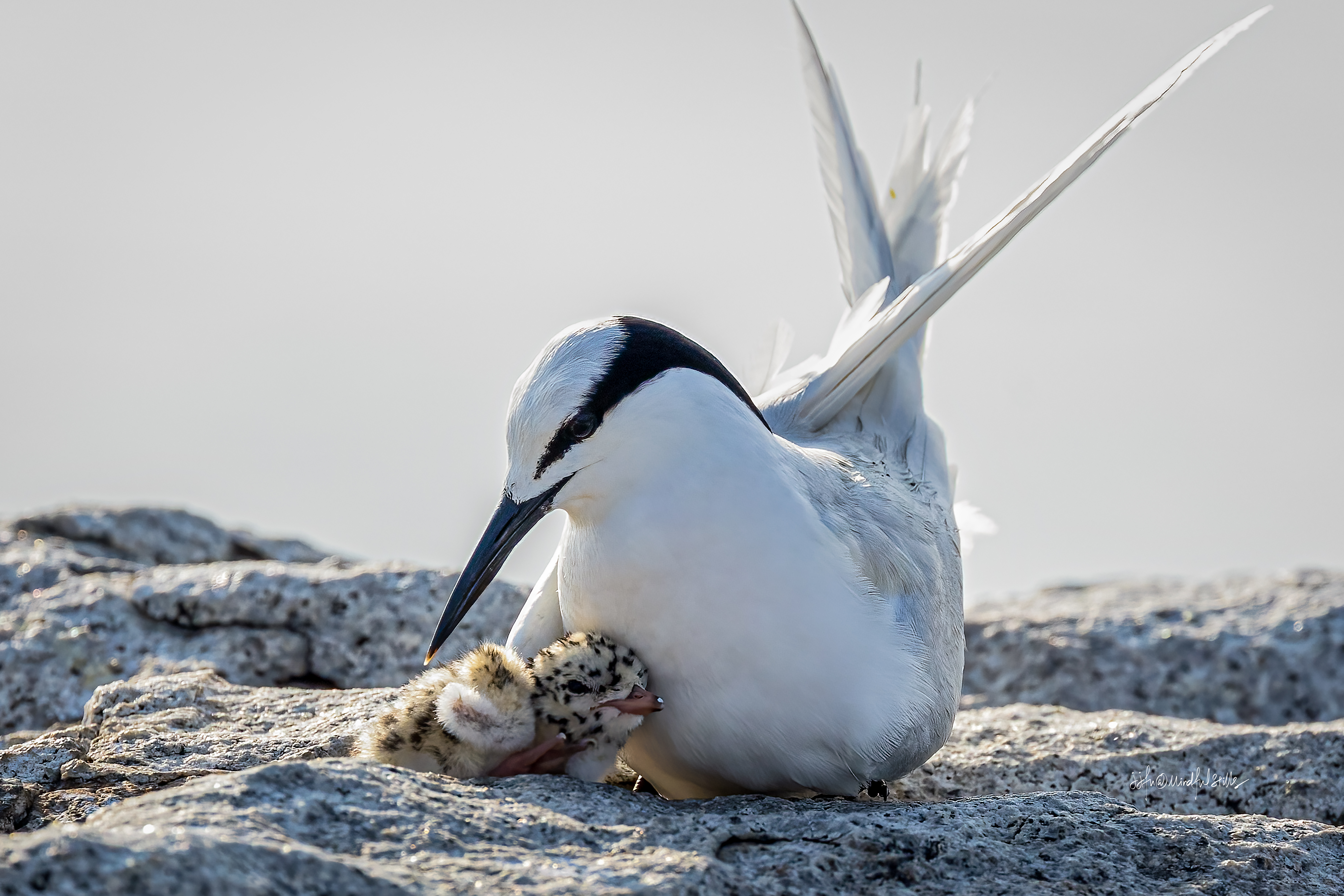 Image by JJ Fu/FB.
Image by JJ Fu/FB.
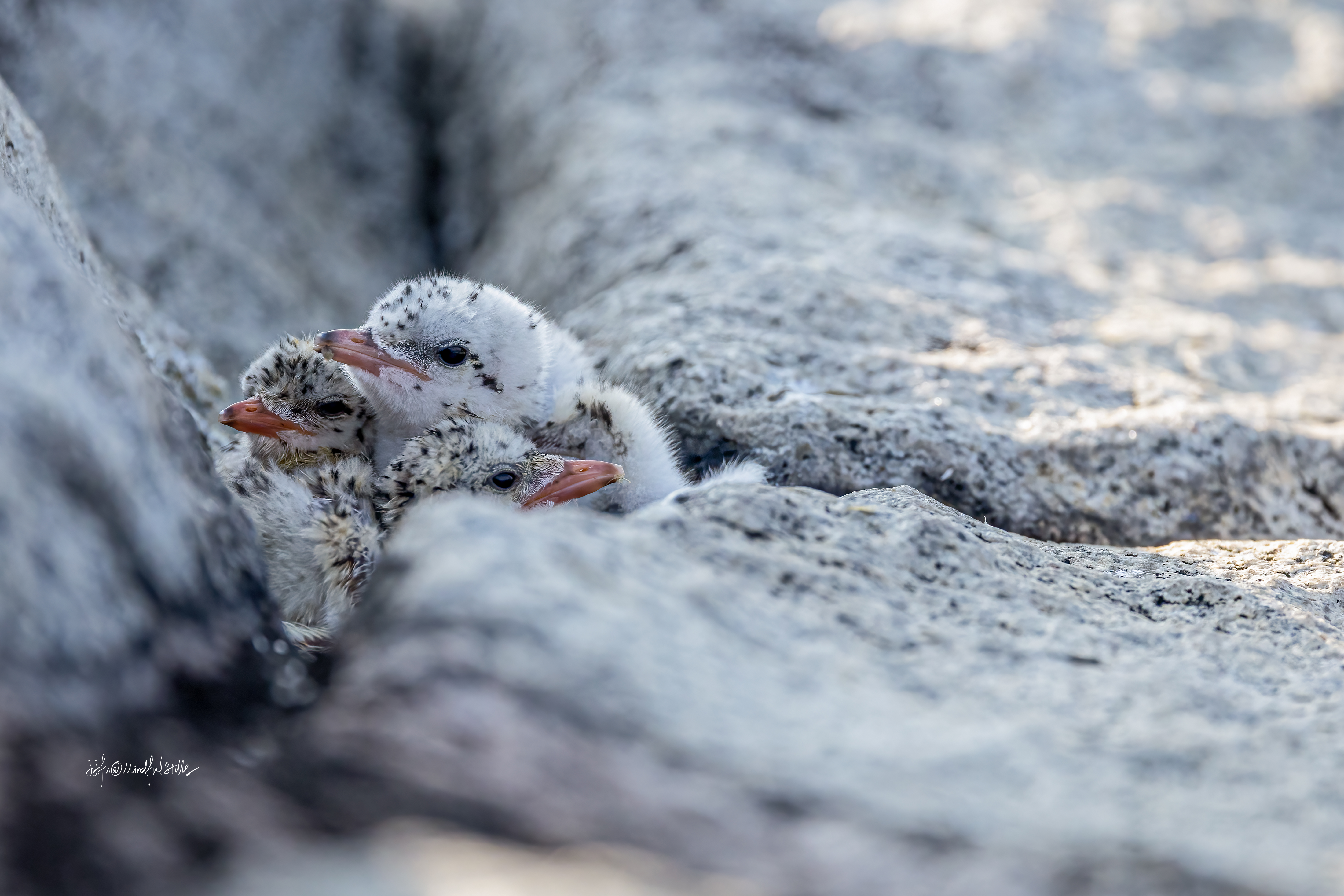 Image by JJ Fu/FB.
Image by JJ Fu/FB.
Top images courtesy of JJ Fu and Judy Wong.
If you like what you read, follow us on Facebook, Instagram, Twitter and Telegram to get the latest updates.
